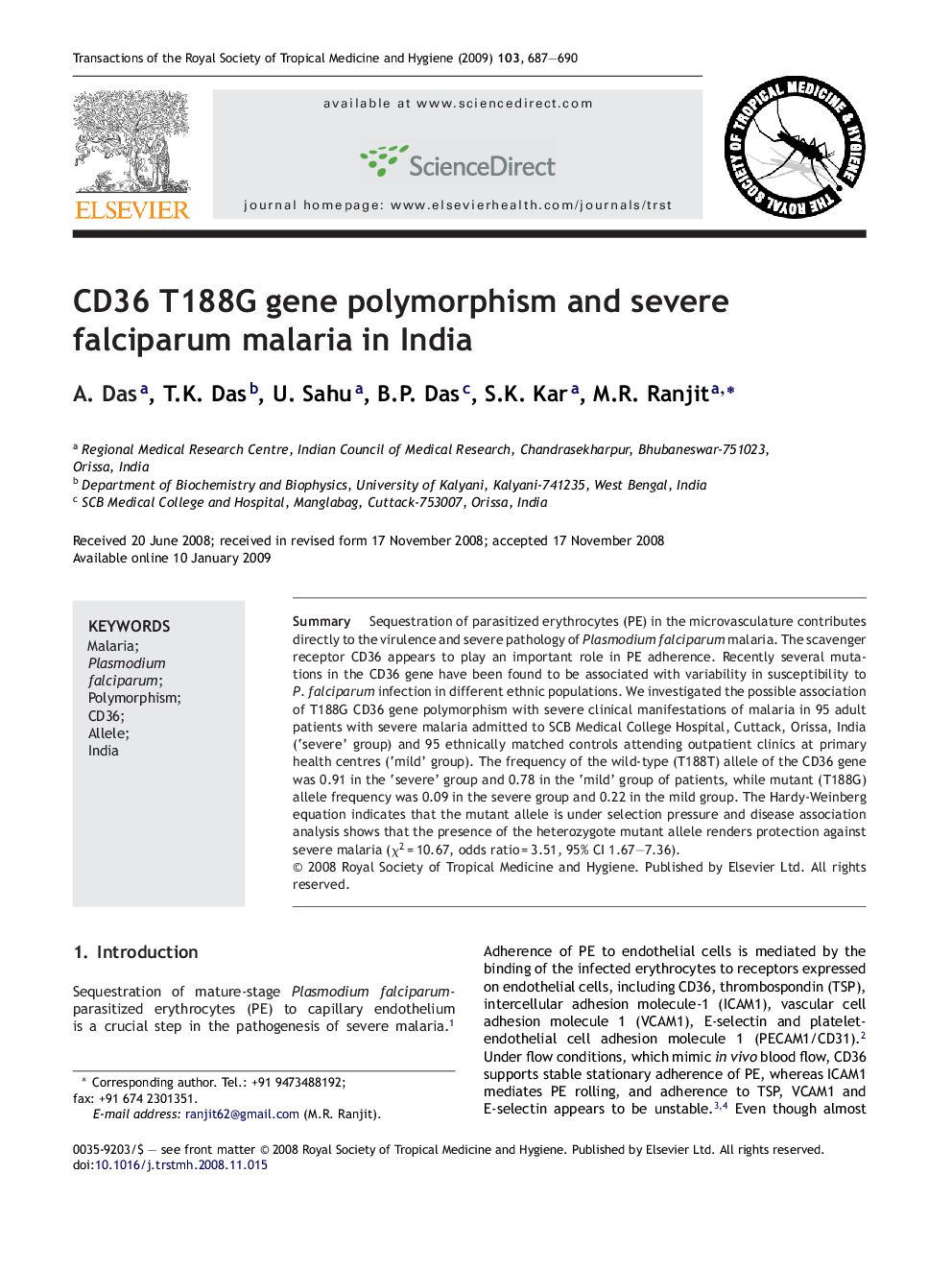| Article ID | Journal | Published Year | Pages | File Type |
|---|---|---|---|---|
| 6137359 | Transactions of the Royal Society of Tropical Medicine and Hygiene | 2009 | 4 Pages |
Abstract
Sequestration of parasitized erythrocytes (PE) in the microvasculature contributes directly to the virulence and severe pathology of Plasmodium falciparum malaria. The scavenger receptor CD36 appears to play an important role in PE adherence. Recently several mutations in the CD36 gene have been found to be associated with variability in susceptibility to P. falciparum infection in different ethnic populations. We investigated the possible association of T188G CD36 gene polymorphism with severe clinical manifestations of malaria in 95 adult patients with severe malaria admitted to SCB Medical College Hospital, Cuttack, Orissa, India ('severe' group) and 95 ethnically matched controls attending outpatient clinics at primary health centres ('mild' group). The frequency of the wild-type (T188T) allele of the CD36 gene was 0.91 in the 'severe' group and 0.78 in the 'mild' group of patients, while mutant (T188G) allele frequency was 0.09 in the severe group and 0.22 in the mild group. The Hardy-Weinberg equation indicates that the mutant allele is under selection pressure and disease association analysis shows that the presence of the heterozygote mutant allele renders protection against severe malaria (Ï2 = 10.67, odds ratio = 3.51, 95% CI 1.67-7.36).
Related Topics
Life Sciences
Immunology and Microbiology
Applied Microbiology and Biotechnology
Authors
A. Das, T.K. Das, U. Sahu, B.P. Das, S.K. Kar, M.R. Ranjit,
